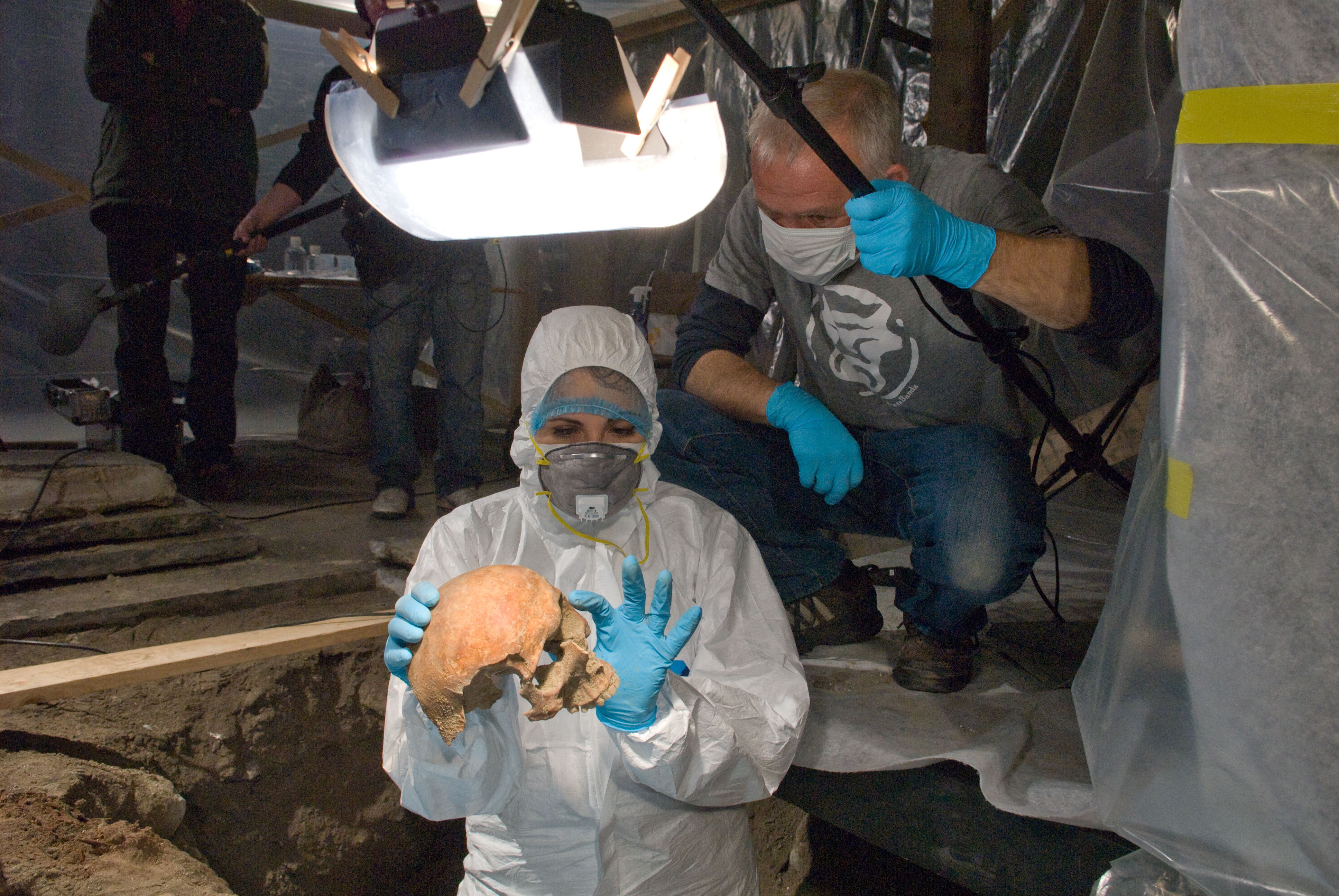
DNA tests fail to solve historical riddle

The identity of a body exhumed in Chur cathedral and thought to be that of the 17th century freedom fighter Jürg Jenatsch remains unresolved, despite the efforts of an international team of scientists using DNA analysis.
Jenatsch (1596-1639) was the main military leader in Graubünden during the troubled Thirty Years War (1618-48). His aim was to secure the independence of Graubünden – not yet part of the Swiss Confederation – against the ambitions of the warring European powers.
His activities, which included swapping sides and converting from Protestantism to Catholicism, made him plenty of enemies, and it is known that he was assassinated by being struck with an axe, and was hastily buried in the cathedral the following day.
A body thought to be his was exhumed in 1959 by anthropologist Erik Hug, who identified it on the basis of his clothing and a large blow to the skull.
Living descendants
The presumed grave was opened again in March 2012 to enable scientists from the universities of Zurich, Berlin, Kiel and the Demokrit University of Thrace to reexamine the body using more up-to-date techniques.
Three of Jenatsch’s living male descendants provided buccal swabs so that their DNA could be compared with that of the skeleton. The researchers were looking for specific markers on the male Y-chromosome, which is passed on unchanged from father to son.
But although one set of markers was identical between the three descendants and the skeleton, that particular pattern is fairly common in central Europe, and therefore did not offer incontrovertible proof. Although the second set showed that the three descendants were related to each other, there were a few differences with the skeleton sample, making it impossible to draw any firm conclusion about the likelihood of a relationship between them.
However, the investigators believe that other indications, such as the age at the time of death, the nature of the fracture to the skull, the clothing and the location of the tomb which agrees with a contemporary account of the burial, point to the body being indeed that of Jenatsch.

In compliance with the JTI standards
More: SWI swissinfo.ch certified by the Journalism Trust Initiative



























You can find an overview of ongoing debates with our journalists here . Please join us!
If you want to start a conversation about a topic raised in this article or want to report factual errors, email us at english@swissinfo.ch.